- Home
- Deborah Harkness
The World of All Souls Page 47
The World of All Souls Read online
Page 47
This magnificent illuminated manuscript is the one I consulted and used as a starting point for imagining the chemical wedding page of Ashmole 782.
See also: ALCHEMY: The Chemical Wedding
“Take your pot of mercury and seethe it over a flame for three hours, and when it has joined with the Philosophical Child take it and let it putrefy until the Black Crow carries it away to its death.”
Title: Book of Alchemical Formulas
Author: Claudio de Dominico Celentano di Valle Nove
Background: “The manuscript inside the next box was smaller than the last, but it contained interesting sketches of alchemical apparatus and snippets of chemical procedures that read like some unholy combination of Joy of Cooking and a poisoner’s notebook.” The Book of Alchemical Formulas is one of the manuscripts Diana needed to consult at the Bodleian Library in preparation for her upcoming keynote address. While she studied it, Matthew ensured her privacy by warding off all the curious creatures who had come to stare at her.
The Book of Alchemical Formulas is an obscure alchemical manuscript produced in Naples in 1606. Its illustrations range from exotic allegorical images to practical representations of the laboratory processes required in alchemy. Celentano states that the philosopher’s stone is red mercury—that is, mercury sulfide, which occurs naturally in cinnabar and was used for vermilion paint. Stages of the alchemical process were often tied to colors to represent the cycles of nature’s creations: nigredo (blackening), albedo (whitening), and rubedo (reddening), to represent putrefaction, purification, and perfection. A successful experiment is marked by a red rose.
See also: ALCHEMY: Opus Magnum and Symbols of Alchemy
“Nevertheless, I stoutly maintain that the Art of Alchemy is clear and true, and founded upon Nature; that its products are as truly silver and gold as the precious metals which are produced in the bowels of the earth; and that I am fully prepared to substantiate all these assertions in the following chapters, and to place them beyond the reach of reasonable doubt. We will triumphantly rebut the attacks of Aristotle, and refute all other objections, putting them to flight with the all-prevailing weapons of truth and reason.”
Title: Pretiosa Margarita Novella (New Pearl of Great Price)
Author: A compendium of alchemical texts made by Petrus Bonus, of works by Arnold of Villa Nova, Lull, Rhasis, Albertus Magnus, and Michael Scot
Background: Diana Bishop read this collection with Mary Sidney while the two of them worked together in the laboratory at Baynard’s Castle. It is a compendium of alchemical texts assembled by Petrus Bonus in 1330, although no manuscripts exist from that period. The manuscript was printed in 1546 by the famous Renaissance printer Aldus, who is credited with introducing a (badly needed!) standardized system of punctuation. Its initial illustrations show the death and subsequent resurrection of a king, a common theme used by alchemists. It is not known whether the illustrations date from the fourteenth century or were created for the Aldus version.
In the book a king is killed by his son, from whom he has been withholding his power. After the king is interred, the son is forced to join him in his tomb; alchemically speaking, the king is buried with the agent that killed him. The tomb is closed, and later some of the bones are removed. Then the courtiers pray to God, and a series of angels place the bones on the earth. In alchemical terms the bones represent the decomposed substance in the alchemist’s flask and the angels are the series of actions that transform this substance from putrefaction (death) to reddening (life). At the reddening stage, the king is resurrected and transformed by having absorbed the agent (his son) that led to his death. The king completes the transformation process by sharing his power with his son. The remainder of the book is a treatise on the virtues associated with alchemical practice.
“The which causeth our generation
Betwixt the Man and the woman
Soe looke that there be noe devision
Be there in the Coniuntion
Of the Moone and of the Sonne
After the Marrige is begun
And all the while they be a wedding
Give him to her drinking
Acetam that is good & fine
Better to him then any wine
Now when this Marriage is done
Philosophers call this a stone
The which hath great Nature
To bring a Stone yt is so pure”*
Title: The Ripley scroll
Author: Unknown
Background: “The dragon was not a dragon, for it had only two legs. It was a firedrake and carried its barbed tail in its mouth, like the ouroboros on the de Clermont banner. The firedrake’s head was tilted to the sky, and it held a crescent moon in its jaws. A multipointed star rose above it. Matthew’s emblem.” The image on the following page shows a section of Yale’s Ripley scroll (Beinecke Library MS Mellon 41)—the same one that Diana describes in this quote and that made up part of the mural in Mary Sidney’s laboratory.
George Ripley was one of England’s most famous alchemists, most widely known for his work The Compound of Alchymy, which was dedicated to King Edward IV in 1471. This poem describes the best way to make the philosopher’s stone, the substance that was supposed to transmute base metal into gold and confer long life on its possessor. Ripley’s works were studied both during his lifetime and after his death by natural philosophers and scientists such as John Dee, Robert Boyle, and Isaac Newton.
The manuscripts now known as the Ripley scrolls provide allegorical images of the processes involved in making the philosopher’s stone. They were actually created in the sixteenth and early seventeenth centuries, after Ripley’s death, and are copies of some long-lost originals. Though there is no evidence that Ripley in fact designed the original on which the scrolls are based, they were named after him because some of them include lines of his poetry and their imagery derives from his poem.
Ripley scrolls are very rare—only around two dozen survive—and they are seldom displayed because of their fragility. Sometimes, as with the Yale copy, the scrolls were cut into sections to prevent damage by being unrolled and rerolled. In this fragmented form, it’s hard to picture them as a forty-foot mural—but that’s the great thing about fiction.
Mythology
“I sing of Artemis, whose shafts are of gold, who cheers on the hounds, the pure maiden, shooter of stags, who delights in archery, own sister to Apollo with the golden sword. Over the shadowy hills and windy peaks she draws her golden bow, rejoicing in the chase, and sends out grievous shafts . . . and when she is satisfied and has cheered her heart, this huntress who delights in arrows slackens her supple bow and goes to the great house of her dear brother Phoebus Apollo, to the rich land of Delphi, there to order the lovely dance of the Muses and Graces.”*
Myth: Artemis/Diana
Origin: Greek (possibly pre-Greek) and Roman mythology
Background: Diana is a Roman goddess whose origins go back at least as far as the sixth century, when Servius Tullius, the sixth king of Rome according to legend, dedicated a temple to her on Rome’s Aventine Hill. Diana was goddess of both wild and domestic animals, of the hunt, and of childbirth. She is usually portrayed as a beautiful young woman wearing a short tunic and holding a bow, with a quiver of arrows slung over her shoulder, often accompanied by a deer. She lives on in the goddess that Diana Bishop and her family venerate.
Diana may originally have been an indigenous woodland goddess, but over time she became identified with the Greek goddess Artemis as well. Throughout the trilogy Diana Bishop is closely associated with both. The Dianic temple on Aventine Hill was dedicated on August 13, Diana Bishop’s birthday. Artemis had a twin brother named Apollo; Diana Bishop had a twin brother who died in the womb. The goddess Diana appears to Diana Bishop several times as a white deer. Most of all, Diana Bishop is linked to the goddess through her role as dispenser of justice.
/>
The goddess is linked not only to Diana Bishop but also to Matthew de Clermont: One of the names Philippe uses for the goddess is Artemis Lykeiê (lady of the wolves). Because of her association with Artemis, the goddess Diana also absorbed Artemis’s connection with the moon goddess (Selene in Greek, Luna in Latin). Selene was associated with the crescent moon, which appears on the seal of the Knights of Lazarus.
“And lo! from opening clouds, I saw emerge
The loveliest moon, that ever silver’d o’er
A shell for Neptune’s goblet: she did soar
So passionately bright, my dazzled soul
Commingling with her argent spheres did roll
Through clear and cloudy, even when she went
At last into a dark and vapoury tent”*
Myth: Endymion
Origin: Greek mythology
Background: According to Greek myth, the moon goddess Selene was in love with a handsome Greek named Endymion. The myth has several versions, in which Endymion appears variously as a shepherd, a hunter, or a king. (Pliny the Elder claimed that Endymion was the first human to observe the movements of the moon, so he might also have been an early astronomer.) In any case, Selene is grieved that Endymion will eventually die, so she beseeches Zeus to make him immortal. Zeus grants her wish by casting Endymion into perpetual sleep.
Evidently Endymion was not a deep sleeper, because he and Selene were supposed to have had fifty daughters, whom scholars believe represented the fifty lunar months. The ancient Greeks devised a calendar called the octaeteris, which was eight solar years or ninety-nine lunar months. According to legend and Greek historians, the Greeks started keeping this eight-year calendar when they began the Olympic Games in 776 B.C. In time the octaeteris came to be measured in two four-year periods, which the Greeks called Olympiads.
The myth of Endymion appeared in Shadow of Night because of the emperor Rudolf II’s attraction to Diana Bishop, whom he dubbed “La Diosa.” He hoped to convince her to participate with him in a risqué play—specifically an enactment of the myth in which the young hunter Actaeon surprises the goddess Diana naked in her bath. La Diosa quickly suggested the myth of Diana and Endymion instead, with Matthew as Endymion and Rudolf as Zeus. The resulting production bore more resemblance to a Monty Python skit than to a classical play, but at least it stayed within the bounds of propriety.
“To appoint me penalties and tasks earth is not broad enough for Juno’s hate. I have seen places unapproached by any, unknown to Phoebus, those gloomy spaces which the baser pole hath yielded to infernal Jove; and if the regions of the third estate pleased me, I might have reigned. The chaos of everlasting night, and something worse than night, and the grim gods and the fates—all these I saw and, having flouted death, I have come back.”*
Myth: Heracles/Hercules
Origin: Greek and Roman mythology, from at least as early as the first century B.C.
Background: Heracles (known to the Romans as Hercules) was one of the greatest Greek heroes. In addition to being semidivine, he was the epitome of strength, masculinity, and courage. He was the son of Zeus through a liaison with the mortal woman Alcmene. Zeus tricked Alcmene into sleeping with him one night by disguising himself as her husband, Amphitryon. Later that night Amphitryon returned from war and slept with his wife as well. Two sons were conceived: Heracles, the son of Zeus, and Iphicles, the son of Amphitryon. (It is actually possible, though rare, for a woman to become pregnant with twins from two different fathers.) Zeus’s wife, Hera, was notoriously jealous and hated Heracles for providing constant evidence of Zeus’s infidelity, so she persecuted Heracles throughout his life.
Heracles was originally named Alcides by his parents, but they later changed his name as an homage to Hera to try to mitigate her hatred. This was unsuccessful. Hera afflicted Heracles with madness, causing him to slaughter his wife and children. His punishment was to carry out ten (later twelve) almost impossible tasks—the famous Labors of Hercules. Among these were slaying the Nemean lion, cleaning the Augean stables (home to over three thousand head of cattle) in a single day, and capturing Cerberus, the hound that guards the gates of the underworld. For his role in the slaying of monsters, Heracles came to be associated with the protection of mankind.
As readers of the trilogy know, the vampire Philippe de Clermont has many traits in common with Heracles. Heracles is often portrayed wearing a lion skin; as Diana noted, Philippe strongly resembled a lion. Heracles’ eleventh labor was to best the giant Antaeus in a wrestling match; Gallowglass reported that Philippe wrestled a giant once. In the sacred grove of the goddess Diana near Sept-Tours, Philippe referred to himself by Heracles’ original given name, Alcides, followed by Leontothymos (the lion-hearted). In his Varia historia (Various Histories), the Roman author Aelian recounted how Heracles was fond of games and often played with children—like Philippe, who appointed a child Lord of Misrule on Saturnalia and obeyed his command to dance with the servant Alain. And tragically, in a parallel to Heracles, Philippe was driven mad by his sufferings in a Nazi concentration camp, although nothing could induce him to hurt his beloved Ysabeau.
“To Nereus and rich-haired Doris, daughter of Okeanos (Oceanus), there were born in the barren sea daughters greatly beautiful even among goddesses . . . [Fifty Nereids are named, ending with] Nemertes, whose mind is like that of her immortal father. These were the daughters born to irreproachable Nereus, fifty in all, and the actions they know are beyond reproach, also.”*
Myth: Nereus
Origin: Greek or pre-Greek mythology
Background: Nereus was the eldest son of Pontus (the Sea) and Gaius (the Earth). Homer’s Iliad described an Old Man of the Sea, who fathered the sea nymphs called the Nereids, though the Iliad didn’t mention Nereus by name. Though he was a shapeshifter, Nereus was known for telling no lies and for being the most trustworthy and gentle of creatures. He could also prophesy the future. He was eventually supplanted by another sea god, Triton.
Nereus was instrumental in enabling Heracles to fulfill his eleventh labor: stealing golden apples from the Garden of the Hesperides. Before Heracles could set out on his journey, he had to wrestle the shape-shifting god to force him to provide directions.
One of Nereus’s daughters, Thetis, married Peleus and became the mother of the Greek hero Achilles.
See also: Heracles, Peleus and Thetis, Achilles
“Far happier then were the times for men,
Fondly yearned for now! You heroes, so bred
Of gods in those silver days, favor me
As I call you now with my magic song”*
Myth: Peleus and Thetis
Origin: Greek mythology, pre-eighth century B.C.
Background: The myth of Peleus is mentioned in Homer’s Odyssey. Peleus was not a god but a hero who was a friend of Heracles and served in the quest for the Golden Fleece. He was originally married to Antigone, who hanged herself after Peleus was falsely accused of infidelity. He then married Thetis, who was a Nereid, one of fifty daughters of the sea god Nereus. It had been prophesied that the son born to Thetis would be greater than his father—a daunting prospect for a prospective husband. Also, like her father, Thetis was a shapeshifter who could transform herself into water and fire and air, and most men were afraid to take her for a wife. On advice from the centaur Chiron, however, Peleus clasped Thetis to his heart while she changed from water to fire to serpent to lioness. Once she became a woman again, he took her to his home and the two were wed.
Incidentally, it was at their wedding that Eris, the Greek goddess of discord (who had not been invited), produced the Golden Apple of Discord that eventually led to the Trojan War. We’ve all known people like this.
It’s fitting that Philippe told the story of Peleus and Thetis at Matthew and Diana’s wedding. They, too, must hold on to each other through a series of changes and revelations that would have dete
rred lesser creatures.
See also: Heracles, Nereus, Achilles
“Those words stirred within Achilles a deep desire
To grieve for his own father. . . . And overpowered by memory
Both men gave way to grief. Priam wept freely
For man-killing Hector, throbbing, crouching
Before Achilles’ feet as Achilles wept himself,
Now for his father, now for Patroclus once again
And their sobbing rose and fell throughout the house.”*
Myth: Achilles
Origin: Greek or pre-Greek mythology
Background: Achilles was the only surviving son of Peleus and Thetis’s seven sons. Understandably, Thetis wanted to make Achilles invulnerable. In some versions of the myth, she did this by holding him by the heel and dipping him into the river Styx, leaving his heel (his “Achilles’ heel”) unprotected. In other versions she anointed him with ambrosia during the day and burned away the mortal parts of his body by night. When Peleus interrupted her efforts, however, she furiously leaped into the sea and never returned. Peleus then gave Achilles to his former teacher, the centaur Chiron, to raise.
Achilles became a hero of the Trojan War and a central character in Homer’s Iliad, where he is portrayed as proud, stubborn, and often driven by rage. After Hector, the son of Sparta’s king Priam, killed Achilles’ dear friend Patroclus, Achilles killed Hector and desecrated his body so viciously that even the gods were upset and intervened. It’s no wonder that when Philippe recounted the tale of Peleus and Thetis, Diana thought, “I was glad that his father didn’t give a full account of the wedding and how the Trojan War got started there. And I was even happier that he didn’t go on to tell the tale of Achilles’ youth: the horrible spells his mother used to try to make him immortal as she was and the young man’s uncontrollable rage—which caused him far more trouble than did his famously unprotected heel.” Diana probably recognized that Achilles’ worst traits parallel those of Matthew de Clermont.

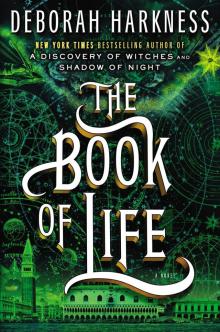 The Book of Life
The Book of Life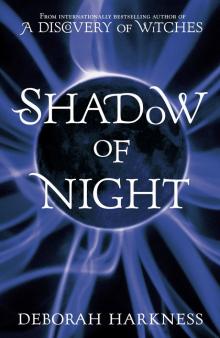 Shadow of Night
Shadow of Night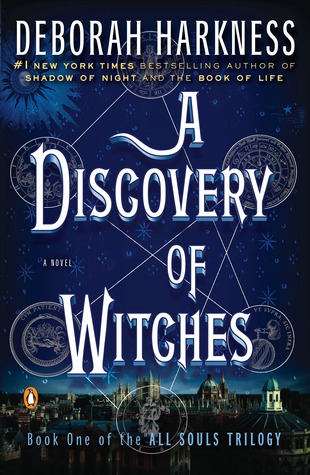 A Discovery of Witches
A Discovery of Witches The All Souls Real-Time Reading Companion
The All Souls Real-Time Reading Companion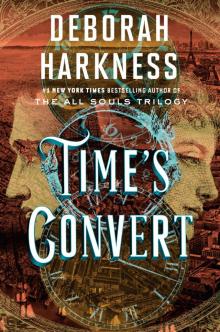 Time's Convert
Time's Convert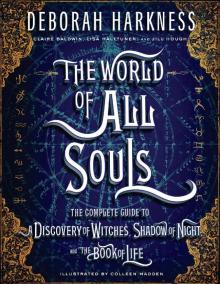 The World of All Souls
The World of All Souls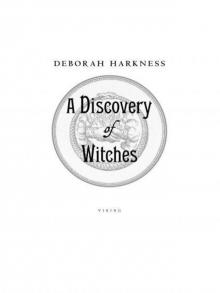 A Discovery of Witches: A Novel (All Souls Trilogy)
A Discovery of Witches: A Novel (All Souls Trilogy) Shadow of Night: A Novel
Shadow of Night: A Novel